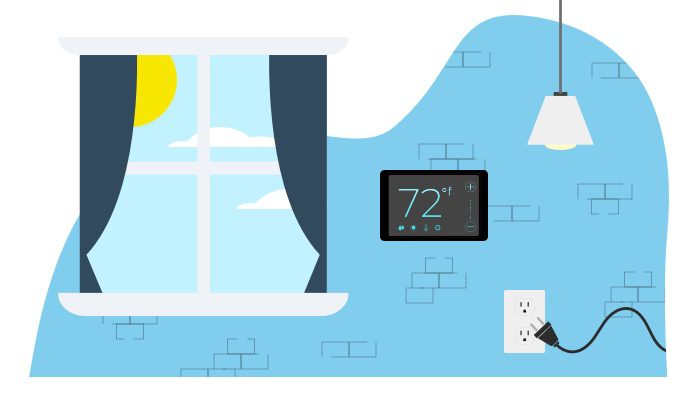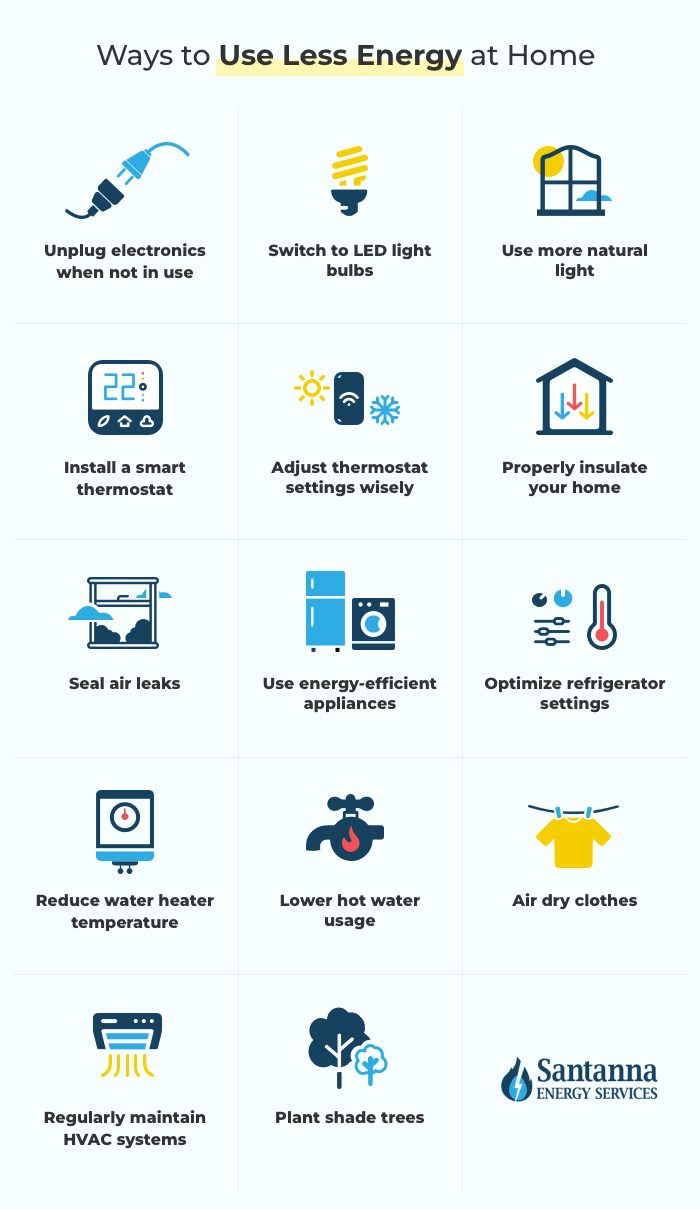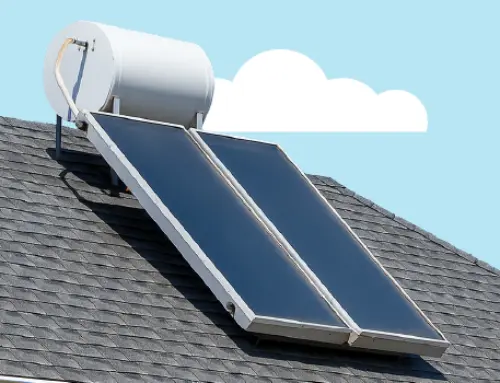14 Easy Ways to Conserve Energy in Your Home
by Tyler Castle
6.6 min read

According to the Energy Information Administration (EIA), energy use in the U.S. has increased by 181% since 1950. In 2021 alone, American households consumed a total 97.33 quadrillion British thermal units (Btu) of energy. And even though renewable sources of energy are seeing steady growth, the majority of our energy consumption still comes from fossil fuels. If you’re looking for ways to reduce your carbon footprint, you’ve come to the right place. Read on for our top tips for saving energy at home.
- Why Save Energy at Home?
- Unplug electronics
- Switch to LED light bulbs
- 14 Ways to Use Less Energy at Home
- Use more natural light
- Install a smart thermostat
- Adjust thermostat settings wisely
- Properly insulate your home
- Seal air leaks
- Use energy-efficient appliances
- Optimize refrigerator settings
- Lower your water heater temperature
- Reduce hot water usage
- Air dry clothes
- Regularly maintain HVAC systems
- Plant shade trees
Why Save Energy at Home?
In addition to reducing your monthly bill, energy-saving practices at home also decreases the size of your family’s carbon footprint. By making decisions that focus on efficiency, such as switching to renewable energy solutions for gas and electricity, you can help reduce demand for fossil fuels — a major contributor to air pollution.
Not only can conserving your energy help reduce your demand for fossil fuels, but little adjustments in your household appliances can save you money too. Taking measures to cut back on energy use puts less strain on your appliances, ensuring that they stay in working condition for longer.
14 Ways to Use Less Energy at Home

So what can you do to reduce your energy usage in your home? These 14 tips are a great place to start:
1. Unplug electronics
Even when they’re fully charged, plugged-in electronics will continue to draw power. The same is true for both idle devices in standby mode and lone chargers. On average, needlessly plugged in TVs, gaming consoles, phones, and other electronic gadgets cost households $165 each year, so it’s always a good idea to make sure they’re unplugged when not in use.
2. Switch to LED light bulbs
According to the EIA, Roughly four percent of your home energy usage comes from lighting. While this doesn’t seem like much, the kilowatt hours can start to add up if you’re using regular incandescent bulbs. Alternatively, LED light bulbs use up to 90 percent less energy and have a lifetime that’s 25 times longer — making them a good investment for your wallet and the environment.
3. Use more natural light
Taking advantage of natural light — no matter how much your home gets — is a great way to save power. For some, increasing the amount of sunlight may be as easy as remembering to open the curtains every morning. However, if you don’t have a lot of direct sunlight, some good ways to make the most of your natural light include: hanging mirrors opposite or beside natural light sources (to reflect the light even further into your home), trimming any outdoor plants that may be blocking your windows, or even installing skylights.
4. Install a smart thermostat
As a key piece of smart home technology, smart thermostats provide several ways to control your indoor climate. With a smart thermostat in place, you can automatically lower and raise your home’s temperature based on a preset schedule, optimizing energy usage while saving on heating and cooling costs at the same time.
5. Adjust thermostat settings wisely
Whether you have a smart thermostat or a manual one, setting the temperature a few degrees cooler in winter and warmer in summer can go a long way toward conserving power. A lower indoor temperature slows the rate of heat loss during the year’s colder times while keeping indoor temperatures higher when it’s warm out prevents hot air from flowing in as quickly — meaning less work for your furnace or air conditioning units.
6. Properly insulate your home
A well-insulated home makes it easier to maintain comfortable indoor temperatures while minimizing heat transfer. Insulation is intended to reduce the amount of heat (or cool air during warmer months) that escapes from your home, which is why it’s important to insulate more than only your walls. By ensuring that your attic, floors, windows, and crawl spaces are insulated too, you can save up to 20 percent on heating and cooling costs.
7. Seal air leaks
Similarly, drafts around windows, doors, and vents all present opportunities for heat and conditioned air to escape, simultaneously driving up your utility bill and wasting energy. To prevent this and improve energy efficiency, you can seal these leaks using weatherstripping or caulking.
8. Use energy-efficient appliances
Whether it’s time to upgrade or you’re looking for a way to reduce the size of your carbon footprint, consider making an environmentally friendly choice when replacing your appliances. Keep an eye out for high efficiency ratings during your search, such as Energy Star-certified options. These products are backed by the U.S. Environmental Protection Agency (EPA) and consume less energy while maintaining functionality.
9. Optimize refrigerator settings
Refrigerators are an example of one appliance that must run constantly in order to fulfill its intended purpose. As such, it’s no surprise that it’s one of the more costly appliances to power. Some ways to optimize your refrigerator’s electricity use include: setting the temperature between 37 and 40 degrees, maintaining its seals, opening the door less frequently, and allowing foods to cool before placing them inside.
10. Lower your water heater temperature
Lowering the temperature on your water heater from the manufacturer-recommended 140°F to 120°F can result in significant energy savings — up to 22 percent annually. By turning down the temperature, you also reduce the amount of residual heat that gets lost to the surrounding environment, providing additional energy savings. Insulating your water heater and hot water pipes are some other techniques you can use to minimize heat loss.
11. Reduce hot water usage
Did you know that hot water usage accounts for about 18 percent of the average utility bill? Luckily, there are a few things you can do to reduce your usage including proactively checking for and repairing leaks, installing low-flow fixtures, taking shorter (or cooler) showers, and washing your clothes using cold-water cycles — which can also extend the lifespan of your garments.
12. Air dry clothes
Whether you use an outdoor clothesline or have a few drying racks set up in the laundry room, air drying clothes comes with benefits for your wallet and the environment — by hanging your wash up to dry, you could save more than $100 per year and reduce your carbon footprint by 2,400 pounds.
13. Regularly maintain HVAC systems
Routine maintenance does much more than keep your heating, ventilation, and air conditioning (HVAC) systems running smoothly. It also prevents energy costs from rising as a result of clogged filters, dirty condenser coils, and blocked condensate drains.
14. Plant shade trees
On a hot summer day, there’s nothing like finding a shady spot to cool off in, out of the sun. The same is true for your house. Strategically planted shade trees can block your home from direct sunlight, reducing the need for excessive air conditioning come summertime. The fact that trees help remove carbon from the atmosphere is an added bonus.
When it comes to reducing energy use, every little bit helps and by following these tips you can make a difference. The environment (and your wallet) will thank you.
Santanna Energy Services is a supplier of renewable energy solutions in the United States, providing services to Illinois, Indiana, Pennsylvania, Michigan, and Ohio. We provide a wide range of energy services and products to meet the needs of both residential and small business customers. Our mission is to provide innovative and cost-effective energy solutions that will help our customers achieve their energy goals. With over 35 years of experience, we are committed to creating life-long relationships by providing quality service to customers, communities, and employees.
Tyler is an experienced energy professional, having worked for Santanna Energy Services, for the past four years. He is passionate about renewable energy and believes that diversifying the energy grid is the key to a sustainable future. Tyler is dedicated to supplying consumers with the best possible energy solutions and works diligently to make sure that Santanna can deliver the highest quality service.







